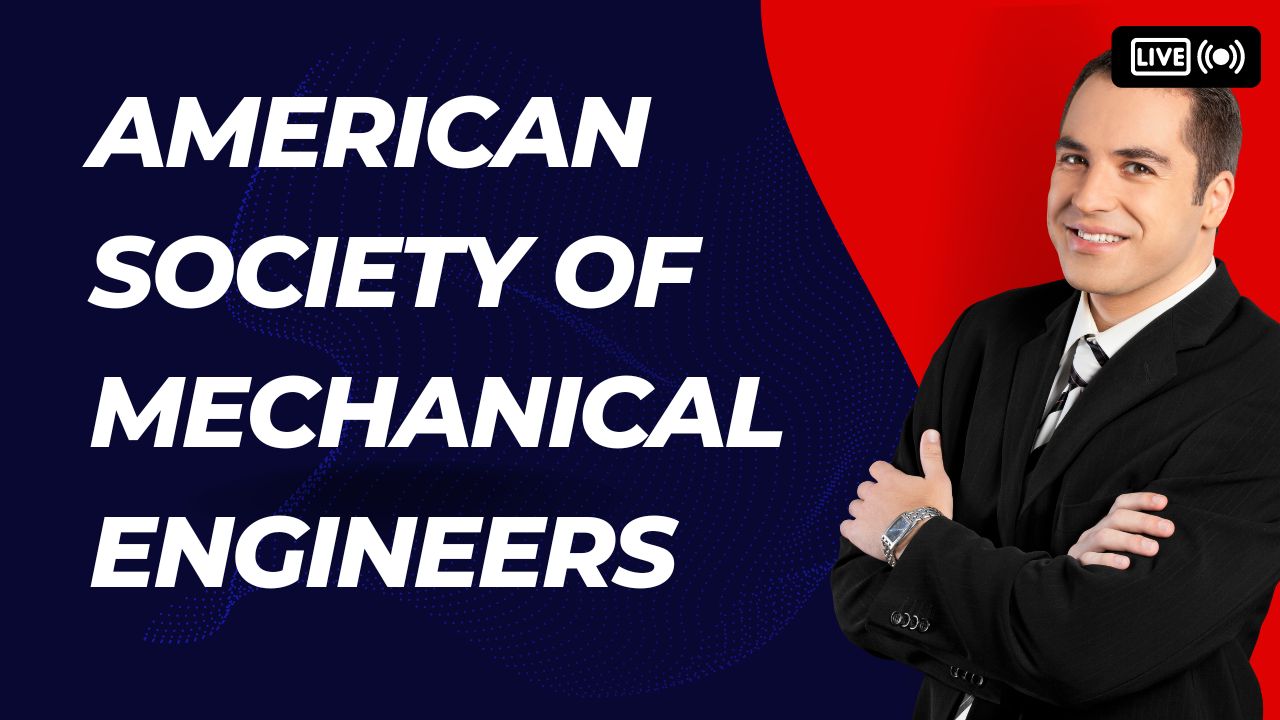Introduction
When we delve into the world of mechanical engineering, there’s a central pillar that has been elevating the field for over a century: the American Society of Mechanical Engineers (ASME). Established in 1880, ASME is more than just an organization; it’s a driving force behind advancements in engineering, an incubator of innovation, and a community of dedicated professionals striving for excellence. Check out the detailed articles on ASME B31.1 & ASME B31.3 also.
Table of Contents
The American Society of Mechanical Engineers: Empowering Innovators
From the first moments of its inception, the American Society of Mechanical Engineers has stood as a steadfast advocate for the engineering community, fostering connections, sharing knowledge, and setting the bar for excellence in the field. With over 100,000 members spanning across 140 countries, ASME has carved a remarkable legacy that reverberates across industries and continents.
Don’t miss the Complete Course on Piping Engineering: Check Now
By EPCLand.com
The ASME’s Contributions and Achievements
From its early days, ASME recognized the need for standardization and best practices within mechanical engineering. Its pioneering efforts led to the creation of codes and standards that govern the design, fabrication, and inspection of various mechanical components and systems. One of its most renowned accomplishments is the Boiler and Pressure Vessel Code – a testament to ASME’s commitment to safety and quality.
Uniting Experts: ASME’s Technical Divisions
ASME’s diverse technical divisions cater to a wide range of engineering disciplines, including aerospace, energy, manufacturing, and more. By bringing together experts from various sectors, ASME fosters cross-pollination of ideas, encouraging innovative solutions to complex challenges. These divisions provide a platform for professionals to collaborate, exchange insights, and collectively shape the future of engineering.
Leading the Path: ASME’s Initiatives
ASME doesn’t merely rest on its laurels; it continually forges ahead with groundbreaking initiatives that push the boundaries of engineering. Their “Innovate Locally, Impact Globally” campaign resonates deeply, emphasizing the significance of local solutions with global implications. Initiatives like this showcase ASME’s dedication to addressing real-world problems with engineering prowess.
Pinnacle of Excellence: ASME Awards and Honors
Recognizing outstanding contributions to the field, ASME awards and honors celebrate visionaries who have left an indelible mark on mechanical engineering. These accolades not only spotlight remarkable individuals but also inspire new generations to pursue innovation, research, and transformative ideas.
Setting Standards: ASME’s Codes and Regulations
Central to ASME’s mission is the development and maintenance of codes and regulations that underpin the integrity and safety of engineering endeavors. These comprehensive guidelines cover a spectrum of industries and applications, instilling confidence in professionals and the public alike, ensuring that engineered systems meet the highest benchmarks.
Bridging Academia and Industry: ASME’s Student Sections
Nurturing the next wave of mechanical engineers, ASME’s student sections provide a bridge between academia and industry. By offering networking opportunities, mentorship, and experiential learning, these sections empower students to transition seamlessly into the professional realm.
Beyond Borders: ASME’s Global Impact
With a presence in over 140 countries, ASME’s impact reverberates globally. Through conferences, seminars, and collaborations, ASME brings together minds from diverse cultures, enriching the engineering landscape with a myriad of perspectives and approaches.
FAQs
Q: What is the primary goal of the American Society of Mechanical Engineers? A: The ASME aims to promote collaboration, knowledge sharing, and innovation among mechanical engineers, while also setting and upholding rigorous standards for engineering excellence.
Q: How does ASME contribute to safety in engineering? A: ASME is renowned for developing codes and standards that ensure the safety and quality of various engineering components and systems. Notably, the Boiler and Pressure Vessel Code has significantly enhanced safety measures.
Q: Can students benefit from ASME’s initiatives? A: Absolutely! ASME’s student sections offer invaluable opportunities for students to connect with professionals, gain real-world insights, and prepare for a successful career in mechanical engineering.
Q: What is the significance of ASME’s technical divisions? A: ASME’s technical divisions provide specialized platforms for experts across different engineering disciplines to collaborate, innovate, and address industry-specific challenges collectively.
Q: How does ASME foster global engineering collaborations? A: ASME’s international presence, encompassing conferences, seminars, and partnerships, facilitates the exchange of ideas and solutions across borders, promoting global engineering advancement.
Q: How does ASME drive innovation in engineering? A: ASME’s initiatives, such as the “Innovate Locally, Impact Globally” campaign, underscore its commitment to pushing the boundaries of innovation, encouraging engineers to create solutions with far-reaching impact.
Conclusion
The American Society of Mechanical Engineers stands as an emblem of engineering excellence, a beacon that guides professionals toward innovation, collaboration, and excellence. Through its codes, standards, initiatives, and global outreach, ASME has shaped the past, present, and future of mechanical engineering. As we continue to explore new frontiers and confront new challenges, ASME remains a steadfast companion on the journey of engineering exploration.
Recommended courses (Published on EPCLand):
- Basics of Piping Engineering
- Piping Layout Engineering
- Piping Material Engineering
- Piping Stress Analysis
- Complete Course on Piping Engineering
- Material Requisitions
- Piping Material Specifications
- Valve Material Specifications
Check related video details
Attempt Quiz
Question 1:
What does ASME stand for?
Explanation: ASME stands for the American Society of Mechanical Engineers, a professional organization that promotes collaboration, knowledge sharing, and advancement in the field of mechanical engineering.
Question 2:
What is the primary mission of ASME?
Explanation: The primary mission of ASME is to establish standards, codes, and best practices for mechanical engineering, contributing to safety, innovation, and collaboration in the field.
Question 3:
Which of the following is an ASME code for pressure vessels?
Explanation: ASME BPVC Section VIII is an ASME code that covers the design, fabrication, inspection, testing, and certification of pressure vessels.
Question 4:
Which ASME code is commonly used for piping systems?
Explanation: ASME B31.1 is an ASME code that covers power piping systems, including design, fabrication, installation, and inspection.
Question 5:
What is the role of ASME in the engineering community?
Explanation: ASME plays a key role in the engineering community by establishing industry standards, facilitating knowledge sharing, and promoting collaboration among engineers.



